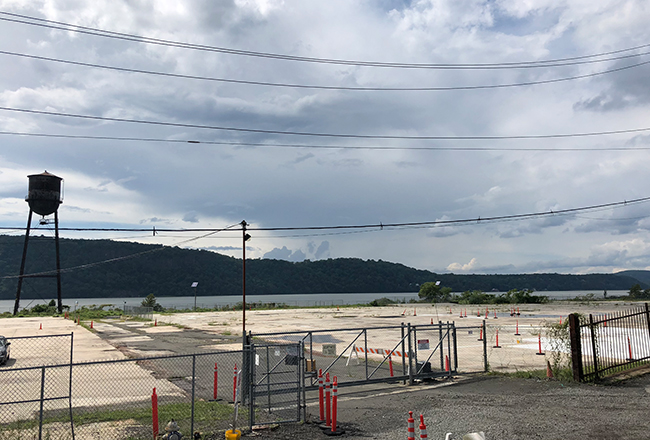
A new developer could take over the cleanup and eventual repurposing of a 28-acre portion of the Hastings-on-Hudson waterfront.
Atlantic Richfield Co., a BP PLC subsidiary and owner of the contaminated property, is in talks with California developer SunCal to remediate and develop the former site of copper wire manufacturer Anaconda Wire and Cable Co. along the Hastings riverfront.
“SunCal is still planning to redevelop this property, and negotiations are continuing,” a spokesperson for SunCal said.
Atlantic Richfield announced late last year that it was exploring the possibility of bringing in an outside developer to complete the remediation and redevelopment of the property. A spokesperson for the company previously told the Business Journal that the move would allow the developer “to incorporate certain redevelopment activities into the remediation process. It also could enable the village to expedite the redevelopment process, allowing the site to be put to productive use sooner.”
According to Hastings Mayor Peter Swiderski, SunCal will partner with Environmental Liability Transfer Corp., a St. Louis-based environmental liability assumption firm, to complete the remediation of the Hastings waterfront. Last year, Environmental Liability Transfer paid $1.85 million to acquire an 11-acre brownfield site in Ardsley from Akzo Nobel. The Dutch company formerly operated a chemical plant on the property that straddles the Saw Mill River Parkway and is next to what is now Rivertowns Square.
SunCal is also working on another contaminated site in Westchester County. The company is part of a joint venture with Diversified Realty Advisors that aims to transform the former waterfront General Motors assembly plant in Sleepy Hollow into Edge-on-Hudson, a sprawling mixed-use development that will include condominiums, townhouses, rental apartments, a boutique hotel and retail space and office space.
Whether SunCal and Environmental Liability Transfer complete the purchase and remediation of the Hastings property, Swiderski noted that Atlantic Richfield would ultimately remain liable for the cleanup.
“This is an important moment for (Atlantic Richfield) and the village as the two parties progress toward the cleanup and ultimate reuse of the waterfront,” the mayor said in an email.
Atlantic Richfield kicked off that remediation last summer, when demolition work began on Building 52, a red-brick industrial building dubbed the “literal birthplace” of toxic polychlorinated biphenyls. Atlantic Richfield removed asbestos and other materials from the building interior prior to demolishing the structure. Construction crews later used excavators and other heavy machinery to bring down the century-old building piece by piece.
The cleanup of the waterfront property follows a 2014 order signed by Atlantic Richfield with the state Department of Environmental Conservation (DEC) in which it agreed to fund the more than $250 million estimated cost of removing the contaminated soil and sediment from the federal Superfund brownfield site.
Building 52”™s demolition came more than a year after the village signed a consent decree that sparked the cleanup. The July 2016 decree is an update to a 2003 version that settled a lawsuit between Atlantic Richfield, the village and environmental group Riverkeeper and forced Atlantic Richfield to clean the site. Since then factors, including potential storm risks, rising sea levels and a new set of directives issued by DEC required changes to the agreement.
Meanwhile, the village is in the process of rezoning its waterfront to allow for new uses along the Hudson River. The area is zoned for marine industrial use.
“Too-restrictive zoning will render the waterfront unbuildable, too lax and it becomes an overbuilt mess that fails to serve the community,” Swiderski said in an email.
The village”™s recently formed Waterfront Rezoning Committee has held a series of meetings and is working with a team from the Pace University Land Use Law Center.
“This work is underway and will seek to establish the ground rules for how a developer would participate in the rezoning process,” Swiderski said.



















